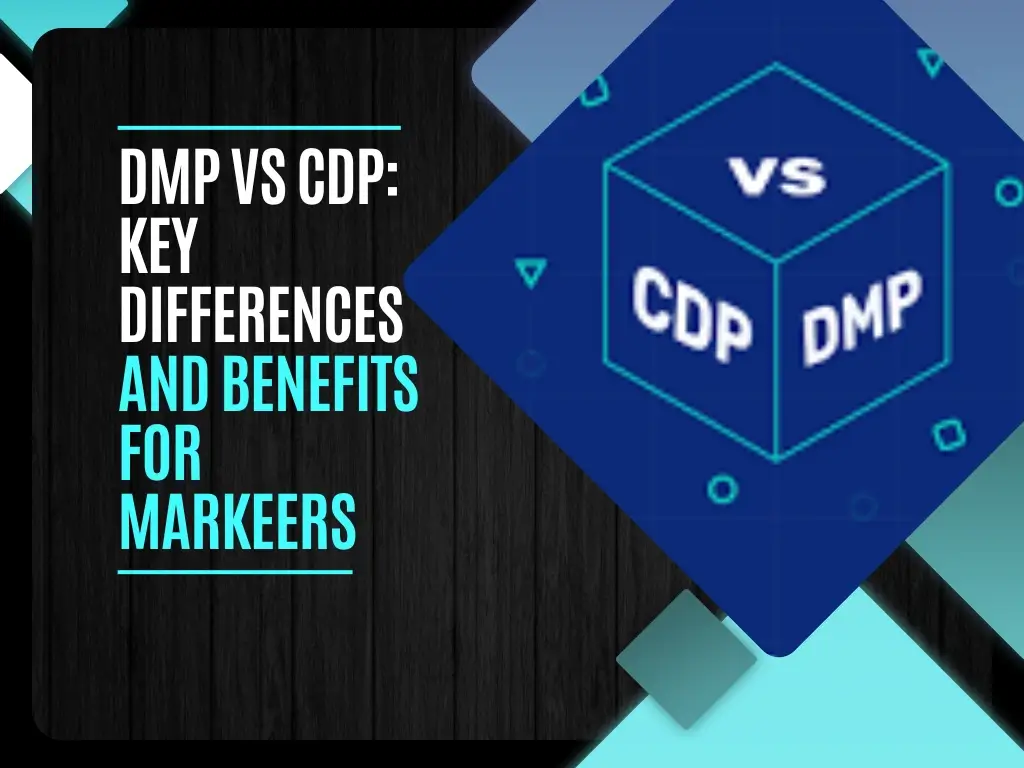DMP vs CDP: Key Differences and Benefits for Marketers
DMP vs CDP: Understand the key differences & benefits of these platforms to enhance your marketing strategies and audience targeting.

In the rapidly evolving landscape of digital marketing, data management plays a crucial role in crafting effective campaigns. Two prominent technologies that marketers often encounter are Data Management Platforms (DMPs) and Customer Data Platforms (CDPs). While they share some similarities, understanding the distinctions between DMP vs CDP is essential for optimizing marketing strategies and enhancing customer engagement. This article will explore the key differences and benefits of each platform, providing insights for advertisers looking to leverage data effectively.
What is a DMP?
A Data Management Platform (DMP) is a centralized system that collects, organizes, and analyzes large volumes of data from various sources. DMPs primarily focus on third-party data, which includes anonymous user information from web browsing, social media interactions, and advertising engagements. Marketers use DMPs to create audience segments for targeted advertising and to optimize media buying.
Key Features of DMPs
- Data Aggregation: DMPs consolidate data from multiple sources, including websites, apps, and ad exchanges.
- Audience Segmentation: Marketers can create detailed audience profiles based on behavioral and demographic data.
- Ad Targeting: DMPs enable precise targeting for programmatic advertising campaigns.
- Reporting and Analytics: They provide insights into campaign performance and audience engagement metrics.
What is a CDP?
A Customer Data Platform (CDP) is a system designed to collect and manage first-party data, which is information directly collected from customers through interactions with a brand. CDPs create a comprehensive view of the customer by integrating data from various touchpoints, such as websites, email marketing, and customer relationship management (CRM) systems. This holistic view allows marketers to enhance customer experiences and personalize marketing efforts.
Key Features of CDPs
- Unified Customer Profiles: CDPs create single customer views by consolidating data from various interactions.
- Real-Time Data Updates: They continuously update customer profiles with the latest information.
- Segmentation and Personalization: Marketers can segment audiences based on detailed behaviors and preferences for personalized messaging.
- Integration Capabilities: CDPs easily integrate with other marketing tools, enabling seamless data flow and campaign management.
DMP vs CDP: Key Differences
While both DMPs and CDPs serve crucial roles in data management, their purposes and functionalities differ significantly. Here are some key differences:
Data Types
- DMP: Primarily handles third-party data and anonymous user information, often sourced from cookies and tracking pixels.
- CDP: Focuses on first-party data, including identifiable customer information gathered through direct interactions.
Audience Targeting
- DMP: Best suited for broad audience targeting and segmentation for advertising campaigns, particularly in programmatic environments.
- CDP: Optimized for personalized marketing strategies that rely on deep insights into customer behavior and preferences.
Data Management
- DMP: Data is often used for short-term campaigns, relying on aggregated information for targeting.
- CDP: Data management is more holistic, allowing for long-term customer relationship management and engagement strategies.
Use Cases
- DMP: Ideal for advertisers looking to maximize reach and improve ad targeting efficiency in digital advertising.
- CDP: Best for brands aiming to enhance customer experience through personalized marketing efforts and customer engagement.
Benefits of Using DMPs
- Enhanced Targeting: DMPs provide advertisers with the tools to create precise audience segments, ensuring that ads reach the right people at the right time.
- Improved Media Buying: By leveraging aggregated data, marketers can optimize their media spending and make data-driven decisions for better ROI.
- Cross-Channel Insights: DMPs aggregate data from multiple channels, offering a comprehensive view of audience behavior across platforms.
- Scalability: DMPs can handle vast amounts of data, making them suitable for large-scale advertising campaigns.
Benefits of Using CDPs
- Personalized Marketing: CDPs empower marketers to create highly personalized experiences based on detailed customer insights, leading to increased engagement and loyalty.
- Holistic Customer View: By consolidating first-party data, CDPs provide a complete picture of customer interactions, facilitating better targeting and segmentation.
- Real-Time Analytics: CDPs offer real-time updates on customer behavior, enabling marketers to respond quickly to changing preferences and trends.
- Seamless Integration: CDPs can easily integrate with existing marketing technology stacks, improving overall efficiency and data flow.
Choosing Between DMP and CDP
When deciding whether to invest in a DMP or a CDP, marketers should consider their specific needs and objectives. Here are some factors to keep in mind:
Business Goals
- If your primary goal is to improve digital advertising effectiveness and audience targeting, a DMP may be the better choice.
- If you aim to enhance customer experience and drive engagement through personalized marketing, a CDP is likely more suitable.
Data Strategy
- Evaluate the type of data your business relies on. If you predominantly use first-party data, a CDP will offer more relevant insights.
- For businesses leveraging third-party data for advertising, a DMP can provide valuable tools for audience segmentation.
Integration Needs
- Consider how each platform will integrate with your existing marketing technologies. CDPs often provide more robust integration capabilities for personalized marketing efforts.
Real-World Applications: DMPs and CDPs in Action
DMP in Action: Programmatic Advertising
A major retailer utilizing a DMP can analyze third-party data to identify new audience segments. By understanding customer behaviors and preferences, they can launch targeted programmatic advertising campaigns across various platforms, optimizing ad spend and increasing conversion rates.
CDP in Action: Personalized Customer Experience
A subscription service employing a CDP can gather first-party data from customer interactions across email, web, and social media. This enables the company to create personalized content and offers, leading to higher customer satisfaction and retention rates.
The Future of Data Management in Marketing
As digital marketing continues to evolve, the importance of effective data management will only grow. Marketers must stay informed about emerging technologies and adapt their strategies to leverage the full potential of data.
Trends to Watch
- Integration of AI and Machine Learning: Both DMPs and CDPs are increasingly incorporating AI to enhance data analysis and improve targeting accuracy.
- Privacy Regulations: With growing concerns about data privacy, marketers must ensure compliance with regulations while leveraging customer data for marketing purposes.
- Cross-Channel Marketing: The ability to seamlessly integrate data across various channels will become essential for effective marketing strategies.
Conclusion
Understanding the distinctions between DMP vs CDP is crucial for marketers aiming to enhance their data-driven strategies. By recognizing the unique benefits and functionalities of each platform, advertisers can make informed decisions that align with their business goals and customer engagement strategies. As the digital marketing landscape continues to evolve, staying ahead of these technologies will be essential for success.



